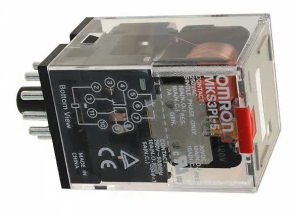Innovating Power Conversion with Non-Isolated PoL Modules
A non-isolated Point of Load (PoL) module is a type of power supply that provides power to an electronic device or system. Unlike isolated PoL modules, which have electrical isolation between the input and output, non-isolated PoL modules do not have this isolation. Non-isolated PoL module are typically smaller and more cost-effective than isolated PoL modules and are used in a variety of applications, including data centers, telecom, and industrial systems.

Key Features and Benefits
- High Efficiency: Non-isolated PoL modules are designed to provide high levels of efficiency, reducing power loss and increasing overall system efficiency.
- Compact Size: Non-isolated PoL modules are typically smaller in size compared to isolated PoL modules, making them ideal for use in space-constrained applications.
- Cost-effective: Non-isolated PoL modules are generally more cost-effective compared to isolated PoL modules, making them an attractive solution for budget-sensitive applications.
- High Current Output: Non-isolated PoL modules are capable of delivering high levels of current, making them ideal for use in high-power applications.
- Thermal Performance: Non-isolated PoL modules have excellent thermal performance, allowing for consistent operation even in high-temperature environments.
- Reliability: Non-isolated PoL modules are designed to be reliable, ensuring consistent performance and reducing downtime in electronic systems.
- Simplified Circuit Design: Non-isolated PoL modules simplify circuit design, reducing the number of components required and improving overall system reliability.
- Versatile Applications: Non-isolated PoL modules are suitable for use in a wide range of applications, including data centers, telecom, and industrial systems.
- Improved Power Distribution: Non-isolated PoL modules improve power distribution, reducing power losses and improving overall system efficiency.
- Advanced Features: Some non-isolated PoL modules come equipped with advanced features such as input voltage monitoring, output voltage and current monitoring, and over-temperature protection, providing improved performance and reliability.
Enhancing Power Supply Efficiency with Non-Isolated PoL Modules
Non-isolated Point-of-Load (PoL) power supply modules offer several advantages over traditional isolated power supply modules that can enhance the efficiency of a power supply. With a lower component count, direct connection to the input voltage, improved thermal performance, and precise control of output voltage, non-isolated PoL module can result in a more efficient, reliable, and cost-effective power supply. Additionally, the simpler power delivery architecture and reduced EMI can be beneficial in applications where these factors are a concern. These benefits make non-isolated PoL modules a popular choice for power supply design in a wide range of applications.
Increasing Reliability and Performance with Non-Isolated PoL Modules in Power Supply Systems

The use of non-isolated point-of-load (PoL) modules in power supply systems can help to increase the reliability and performance of the system. Non-isolated PoL modules are not isolated from the main power supply and therefore are able to draw power directly from the main power supply. This direct connection between the main power supply and the PoL module reduces the number of components that are required in the power supply system, resulting in a simpler and more efficient system. Additionally, the direct connection between the main power supply and the PoL module eliminates the need for additional voltage regulation, allowing the system to run more efficiently. The direct connection also reduces the amount of electrical noise that is introduced into the system, resulting in improved power supply stability and improved system performance. Finally, the direct connection reduces the number of potential failure points within the system, resulting in increased system reliability.
Exploring the Innovations in Non-Isolated PoL Module Technology and their Impact on Power Conversion
Power conversion efficiency (PCE) is an important metric for electronic systems, as it determines how much energy is lost as heat during a conversion process. Non-isolated point-of-load (PoL) modules are used to deliver power to loads in power systems, and recent innovations in PoL module technology have had a significant impact on PCE. In this paper, we discuss the various innovations in non-isolated PoL module technology and their impact on PCE. We first discuss the importance of PoL modules and their advantages over other power delivery systems. We then review the different types of PoL modules, including buck, boost, and buck-boost converters, and discuss their respective advantages and limitations. We then examine recent advances in PoL module technology, including the introduction of digital control and integration of the PoL module into system-on-chips. Finally, we discuss the potential impact of these innovations on PCE and the potential for further improvements. We conclude by discussing the potential applications of PoL modules in power systems and the need for further research into their optimization.




